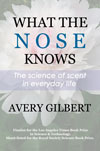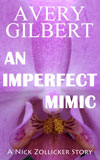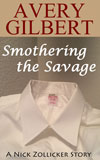
Of all the styles of psychological experimentation, one of my favorites is the field study. Take a simple behavior, observe it under natural conditions, quantify it, and then carefully perturb it this way and that. Done well, a field study wipes away the detritus of conventional wisdom and reveals new dimensions to perception and behavior. Because field studies don’t usually address Big Questions and hypothetical constructs they tend to be looked down upon by grand theoreticians. But that’s just the reason I like them: direct observation gives you a firm place to plant your boots as you climb along the empirical path.
In the course of blowing a few raspberries at a recent example of poorly executed and over-hyped smell research, I browsed again through the literature on scent and behavior in natural settings. While I described some of it in What the Nose Knows it turns out I missed a fascinating study by a French social psychologist named Nicolas Guéguen.
Published in 2001 under the dry title “Effect of a perfume on prosocial behavior of pedestrians,” the experiment was quite simple. It took place outdoors on sunny days in early spring in a mid-sized French tourist town. Guéguen’s accomplices were four women around twenty years old, dressed in jeans and T-shirts. Each woman took turns standing in front of a phone booth pretending to rummage through her handbag but actually counting passersby. As the tenth random person (other than kids, old folks, and people in groups) approached, she would start walking about three meters ahead and then “accidentally” drop a glove or a packet of tissues. Two observers recorded whether the target person told the confederate that she had dropped something. Simple enough.
The experimental treatment was also simple: the young woman either wore perfume or not. If worn, the perfume was applied sufficiently that it could be detected by the person following three meters behind her. (The French term for one’s trailing personal scent plume is sillage, which literally means “wake.”)
When the young woman who dropped a glove was wearing perfume, the target person called it to her attention 95% of the time compared to only 70% of the time when she was wore no perfume. The difference—the perfume effect—was statistically significant. The comparable results were 20% and 7.5% for a dropped packet of Kleenex. (Guéguen thinks more people helped with the dropped glove because it has greater perceived value.) Whether the target person was male or female made no difference to the results.
The fact that people are more willing to help a young women when she is wearing perfume is intuitively reasonable. What’s neat is that perfume increased helping behavior even in the absence of a direct request. Guéguen doesn’t oversell his results: he found modest effects of perfume under realistic conditions. But in doing so he’s given us a new point of leverage for exploring how people respond to personal fragrance and, perhaps, even why they wear it. Did the perfume affect the target’s mood? Did it make the young lady seem more sympathetic or did it simply draw attention to her? As we answer these questions we’ll begin to write the natural history of perfume use.
* * *
I’ve recently criticized some smell studies: ones that promise more than they deliver or that needlessly perpetuate stale conventional wisdom. Part of being a scientist is to be skeptical—of your own results as well as those of others. Constant questioning and cross-checking keep the entire enterprise honest and on track (*cough* global warming *cough* *cough*). So despite the discomfort it might cause my colleagues, I call ‘em like I see ‘em and expect no less in return.UPDATE November 28, 2009
I emailed Professor Guéguen and he was kind enough to tell me the perfume used in this study. It was Coco by Chanel.
UPDATE May 12, 2019
Questions have been raised about a number of studies published by Nicolas Guéguen, although not this one in particular. See my new post on the matter here.




2 comments:
I'd read in The Smell Report at the Social Issues Research Centre that 'subjects exposed to pleasant fragrances tend to give higher attractiveness ratings to people in photographs' although the person has to be 'average.' If they're super hot or super ugly it has no effect.
On a slight tangent, later in the report they state that women's sensitivity to musk is much greater than men's. 'Sexy perfumes containing musk are therefore more likely to arouse the woman wearing them than any potential male partners. But by making a woman feel more sensual, the perfume may affect her behaviour and thus indirectly increase her attractiveness.'
But I must warn you, they mention Proust at some point too... Nooooooooo!!!
Eliza:
Thanks for bringing up the scent & atttractiveness connection. This is another area where I'd love to see more field work. Rating photographs of other people is a pale proxy for face-to-face scented encounters. Of course there's better experimental control with photos, but it comes at a cost of realism and the ability to generalize the results to what my academic friends call "the real world."
Thanks
Post a Comment